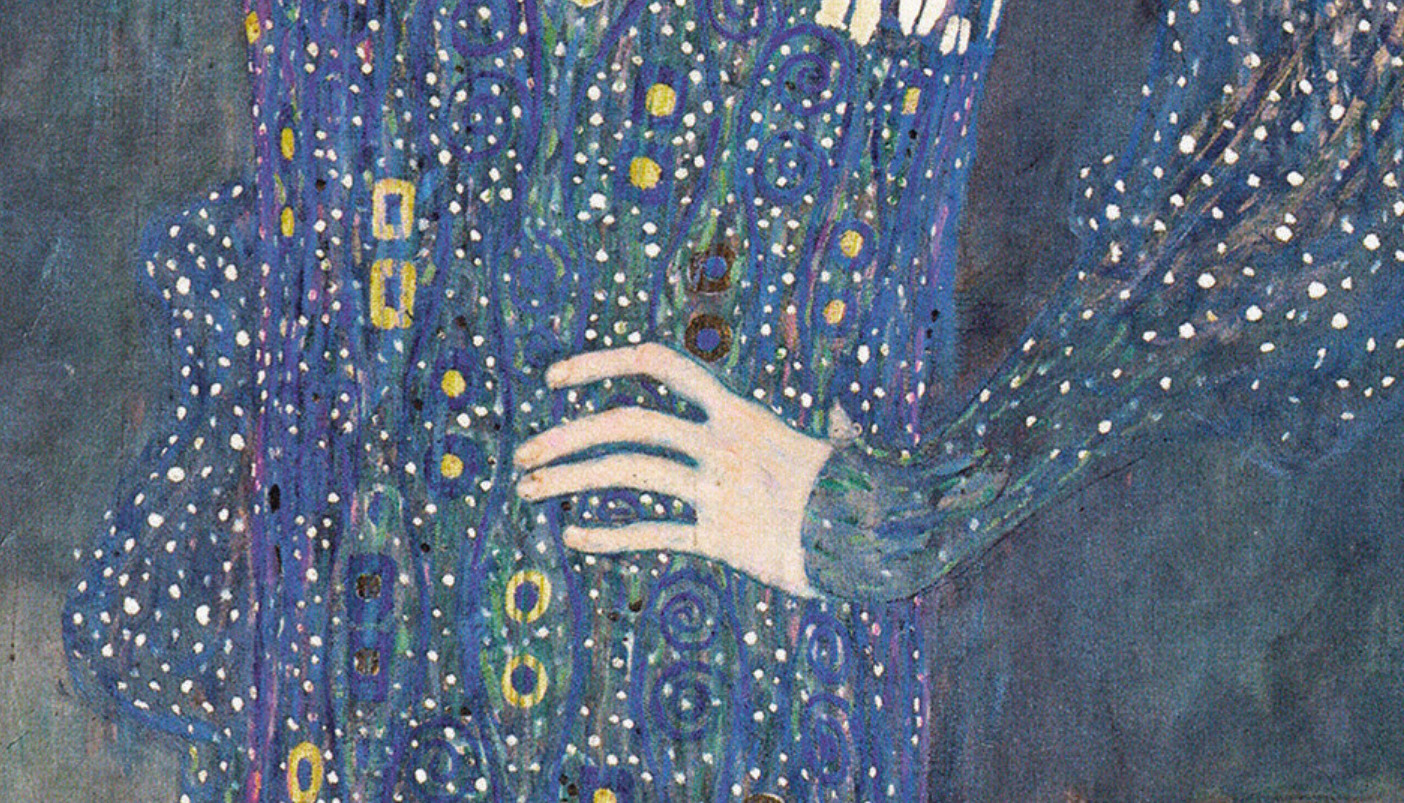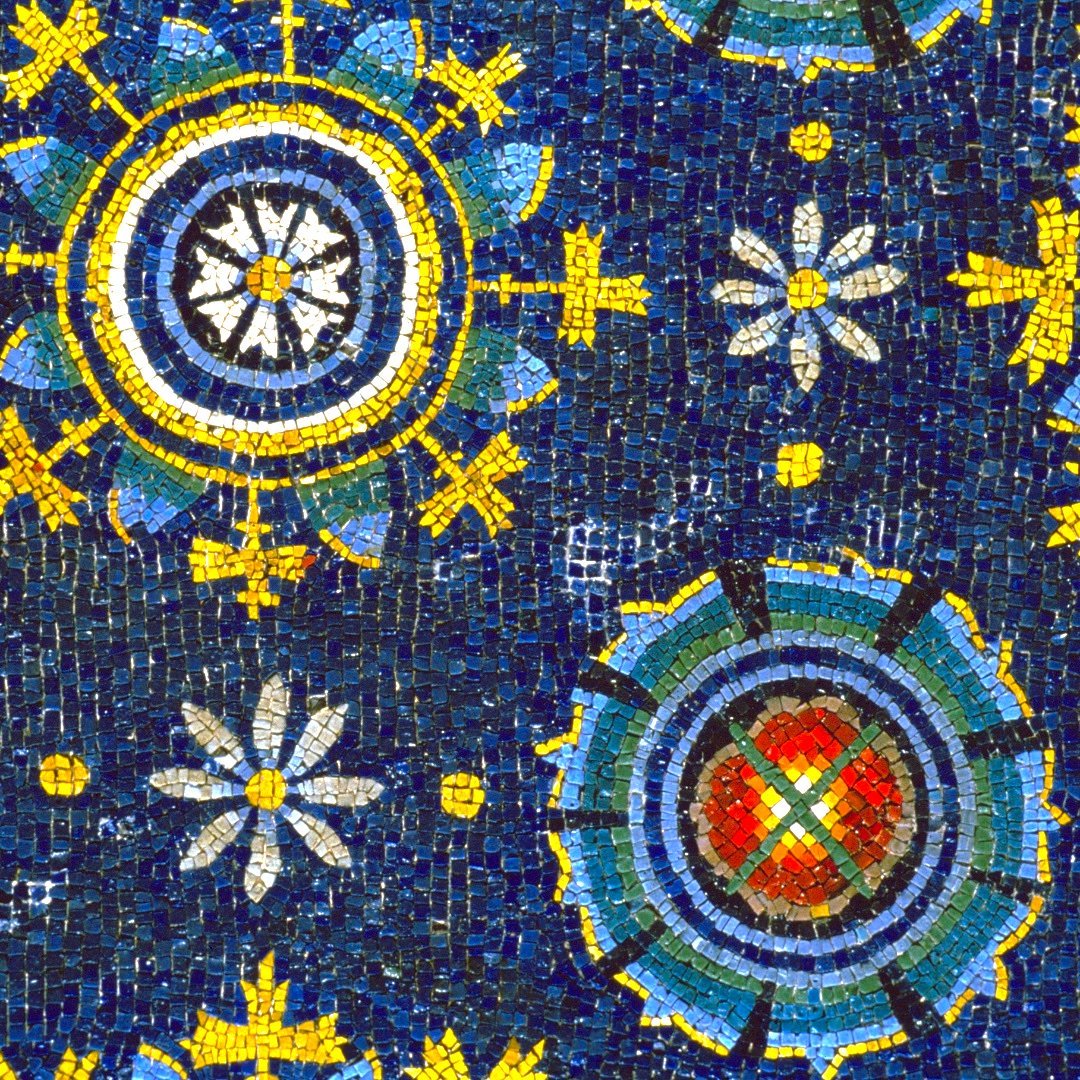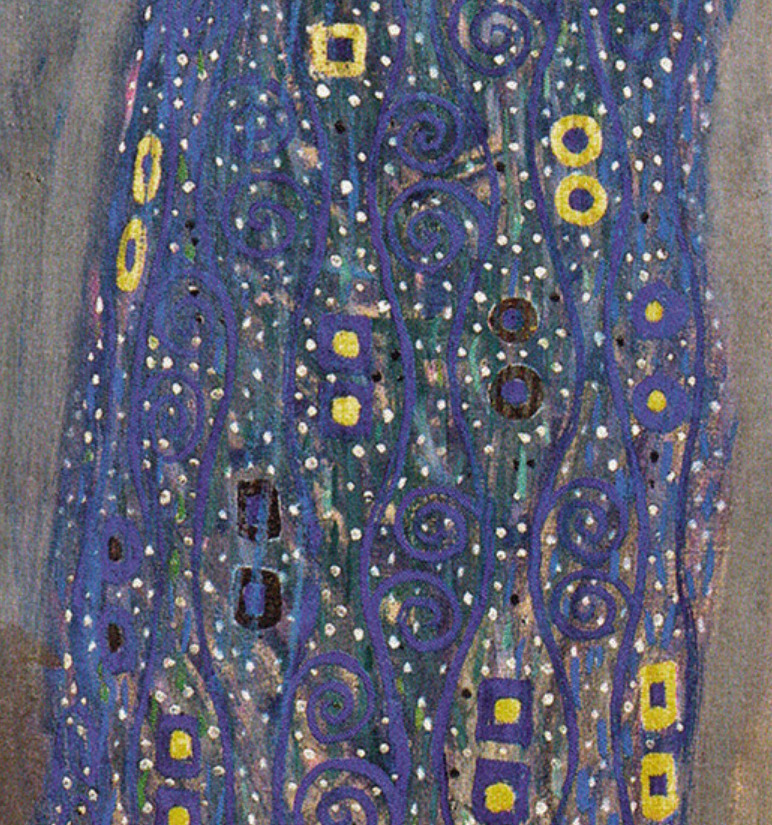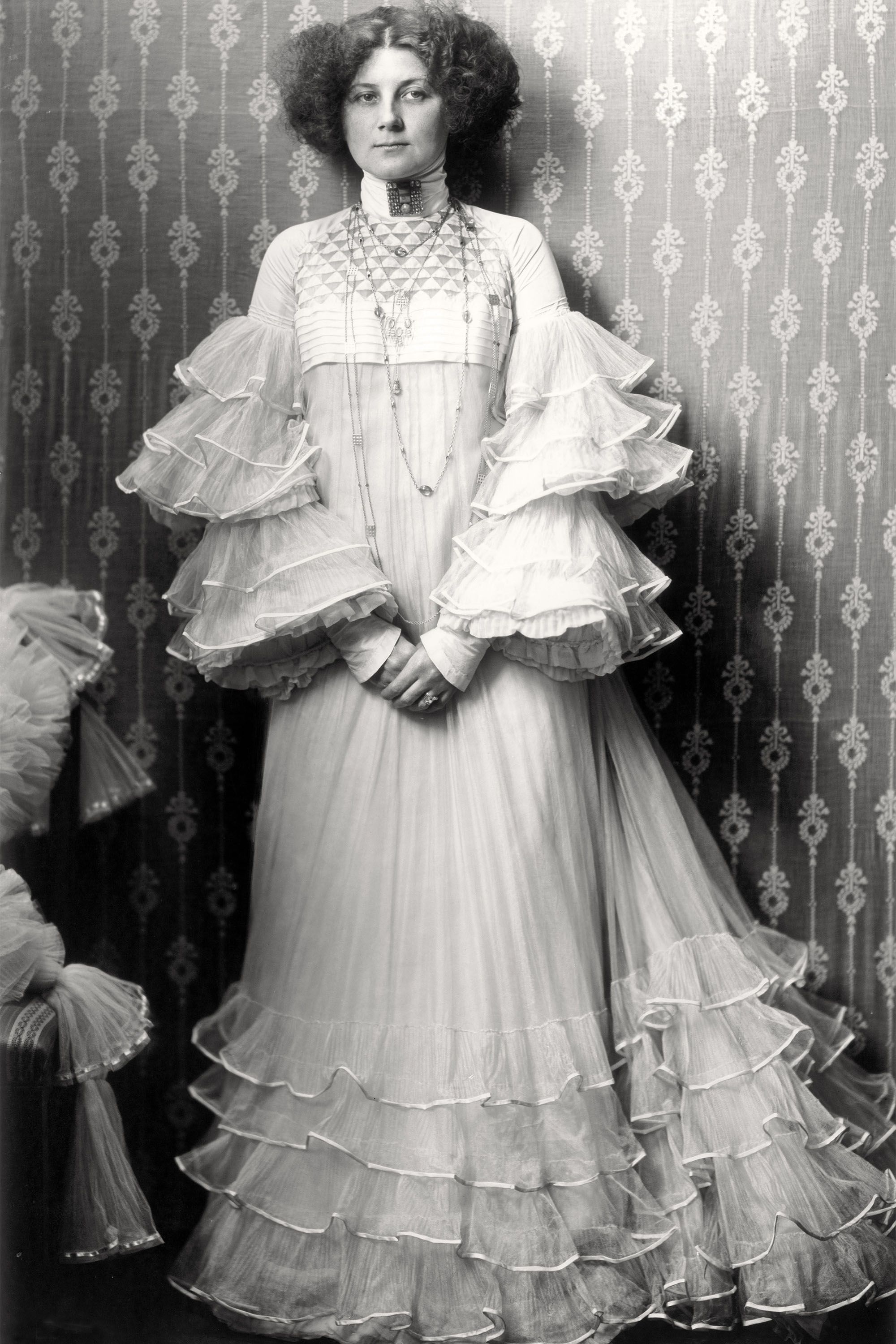Austrian painter Gustav Klimt died on this day, 6th February, in 1918, from a stroke. His last words were “Call Emilie”, referring to Emilie Flöge: his life-long best friend, intellectual companion, muse and possibly a lover as well.
 Gustav Klimt, Portrait of Emilie Flöge, 1902
Gustav Klimt, Portrait of Emilie Flöge, 1902
I have been captivated by Gustav Klimt’s “Portrait of Emilie Flöge” these days. It is this mesmerising blueness, at once dreamy and vivacious, and the pattern of the dress which seems to be dancing on my mind, moving almost in front of my eyes – the more I gaze at it the more it is coming alive. This is yet another one of Klimt’s wonderful portraits of the high-class Viennese ladies, but this is not just another Viennese lady. Who was Emilie Flöge and who was she to Klimt? In the simplest, or perhaps in the most complex of terms, Emilie was Klimt’s life companion. She was his muse and his best friend. Their relationship has been as much a subject of debates and gossips in their times as it is in our times.
Klimt was a notorious womaniser and a painter known for his provocative erotic themes, but in the end, Emilie was the one with whom he had exchanged more than four hundred letters and postcards, she was the one with whom he had been spending his summer holidays, she was the one with whom he collaborated artistically, and, perhaps most poignantly, she was the one he called for on his deathbed and she was the one who inherited half of his estate. Was she his lover in the physical sense of the word? Well, who knows really. The fact that Klimt has left no proof of their relationship in his letters means nothing, for he was not a man of words nor was he the man to kiss and tell. The discreet nature of their companionship doesn’t necessarily mean there wasn’t more under the surface. Emilie wasn’t a low-class girl or a prostitute as Klimt’s other models were. Despite her association with the bohemian circles, and mainly due to her fashion philosophies, Emilie was still part of the respectable society and had her own reputation to keep. One doesn’t need to flaunt what one has.

And how did they two meet? Well, Klimt’s younger brother and a fellow artist, Ernst, died suddenly in 1892. Klimt lost not only his brother but also his father that year and that left him with the responsibility of taking care not only of his own family but also of Ernst’s young bride Helene Flöge. Emilie was Helene’s younger sister, eighteen years old at the time, and she befriended Klimt by suggesting they both start learning French together. These innocent lessons have grown into a serious bond that laste for twenty-seven years, until Klimt’s death. From such a simple, unassuming root a beautiful golden flower of ‘Vienna Secession’ blossomed, or should I say perhaps, two flowers, intertwined yet separate, for Klimt and Emilie, despite their close bond, both had their own pursuits.


Ceiling mosaic “Garden of Eden”, barrel vault, Mausoleum of Galla Placidia (died 450), daughter of the Roman Emperor Theodosius I, Ravenna, Italy. Picture found here.


Emilie was a seamstress turned couturiere, and, in 1904 she became a business woman as well, having opened her own fashion salon called “Schwestern Flöge” (Flöge Sisters) together with her sister Helene. The dresses that they were designing were in the style and spirit of the Wiener Werkstätte or “Vienna Workshop” which was a productive association in Vienna, established around the same time, in 1903, by the painter and graphic designer Koloman Moser, the architect Josef Hoffmann and the patron Fritz Waerndorfer. The association brought together architects, artists, designers and artisans working in ceramics, fashion, silver, furniture and the graphic arts. Their ideas, in terms of fashion, were unconventional and reformative, continuing perhaps where the Victorian trend of the Artistic dress and the Pre-Raphaelite Brotherhood had stopped.
The freedom in one’s clothing wasn’t merely a matter of feeling comfortable, it was a liberation from society’s restraints on a symbolic level. A lady freeing herself from the torments of the corset had made not just a practical decision, but a social statement as well. Designs of Emilie’s dresses had a loose high-waisted silhouette, flowing fabrics, billowing sleeves, comfortable in terms of form, inspired by the flowing Oriental styles of kimono and kaftan, and inspired in print by the kind of patterns that Klimt loved and often designed as well, a stunning mixture of geometrical and floral. Klimt himself loved to feel cozy and free, especially whilst painting and during his countryside holidays. He was often seen, and photographed even, in his garden wearing comfotable loose garments with no underwear and sandals on his feet.

Emilie Flöge wearing an Artistic Reform dress, photograph by D’Ora, 1907

Emilie Flöge and Gustav Klimt in a garden, both wearing their loose garments.
In May 1903 Klimt travelled to Ravenna and Venice, then spent the summer months pleasantly on the Attersee with the Floge familie, and in November the same year he made another trip to Italy and visited Padua, Pisa and Florence. This portrait of Emilie was painted in 1902, a year before Klimt’s Italian adventures, but, to me, it signifies a premonition of sorts, as though the fifth century mosaics of San Vitale and Galla Placidia had been calling out to him with their golds and blues, with their centuries old Byzantine charms. I do love the dress that Emilie is wearing in the portrait! It is just magnificent; flowing loose and freely as though it were a river of dreams, with those beautiful bishop sleeves, wide and then tight at the wrist, and the pattern with its blue swirls, golden circles, white dots, white ovals, then the shawl tight around her neck, like the goddes of Midnight, her pale moon-face arises from the blueness and then that voluminous hair which brings to mind the hairstyle from the portraits of the Spanish painter Velázquez. Hungarian writer and journalist Ludwig Hevesi wrote upon seeing the portrait: “another, unfinished portrait has come to us as if from a blue-mottled world of majolica and mosaic.”
I almost prefer the blueness of this portrait to Klimt’s future golden portraits, there is something ethereal, mystical and dreamy about it which brings to mind the nocturnal atmosphere of the ceiling mosaic in the mausoleum of Galla Placidia, the daughter of the Roman emperor Theodosius I, in Ravenna, representing the “Garden of Eden” where the deep blue circular golden decorations represent the white corollas of moonflowers. As one may physically pass from the nocturnal atmosphere of the mausoleum of Galla Placidia, where one sees nothing but blueness wherever one ganders, to the bright and golden interiors of the Basilica of San Vitale, full of lightness and life, thus it seems that Klimt has symbolically passed from the starry night of the portrait of Emilie and exploded into the bright golden day that was his Golden period.
Tags: 1900s, 1902, art, art blog, Art Noueau, artistic dress, Austrian artist, blue, dress, Emilie Floge, fashion, fashion design, Gustav Klimt, Jugendstil, Klimt, late antiquity, lovers, mausoleum of Galla Placidia, mosaic, ornamental, portrait, Portrait of Emilie Floge, Ravenna, Reformkleider, Vienna, Vienna Secession, woman
 Alphonse Mucha, Girl With a Plate With a Folk Motif, 1920
Alphonse Mucha, Girl With a Plate With a Folk Motif, 1920














